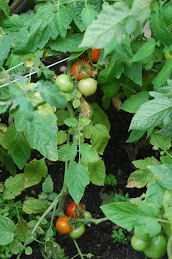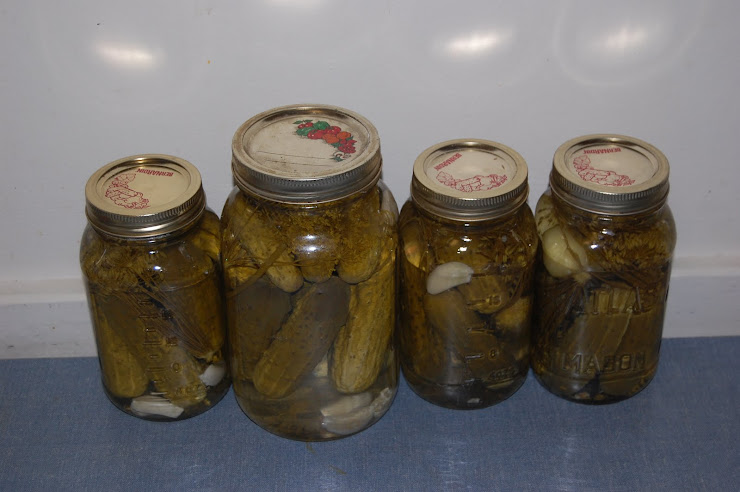
The word 'probiotic' seems to be everywhere these days, but using microbes to transform food and enhance the available nutrients is not new; in fact it's as old as mankind itself. We start using probiotics in our diets almost from birth; breastfed babies have colonies of bacteria in their gut that break down the sugars in breast milk for easier absorption. As we age, the types of microbes in our intestines changes to adapt to our diet. Introducing microbes to food before we eat it helps to repopulate those colonies, as well as rendering food more digestible. Fermentation is probably the most widely used method of introducing probiotics in our diets; there are many methods of fermenting different substances and even more microbes at work in these methods. Like yogurt, the process behind things like sauerkraut and kimchi are dependent on lactic acid producing bacteria, hence why this process is often referred to as lacto-fermentation.
The most commonly known probiotic bacteria are the Lactobacillus family. Anything that starts with the initial L. followed by a barely pronounceble latin name is a member of this family. L. acidolphilus is probably the most well known; lately L casei has been getting some press as well. I'm sure you can figure out where L. kimchii is commonly found! This group of bacteria are commonly found in our guts (and in women they are found in healthy vaginas as well). The main reason we consider them beneficial is because their acid production makes their surroundings a little less inviting for some of the not so friendly bacteria- it's a competition thing and in a healthy gut the balance is constantly maintained. However scientists are beginning to examine the possibility that certain strains of this bacteria also produce additional health benefits which is why there's a recent commercial interest as well.
Another less commonly known probiotic bacteria is the Bifidobacterium family. Like the Lactobacilli they are found in yogurt and fermented foods. They are also found in the gut of healthy individuals, primarily infants; their numbers decline in the human body with age. Interestingly, bottle fed infants have much lower numbers as well. One species, B infantis is very successful at treating irritable bowel syndrome. Scientists are also looking at this group for it's positive effects on the immune system.
The best part of all of this is that it's very easy to ferment foods at home. Given the right conditions, fermentation by lactobacilli will take place naturally, because lactic acid bacteria occur normally on things like raw cabbage leaves where they grow. In traditional fermentation recipes salt is added to inhibit unwanted microbes like molds initially but allow the lactic acid bacteria to thrive. Once the bacteria have taken hold, the process is self promoting. As the desired bacteria eat up the naturally occurring sugars, they produce acid; the acid in turn makes the environment more hostile to unwanted pathogens therefore acting as a preservative. The benefits to humans are multilevel- a source of vitamins from the host medium (vegetables) along with other nutrients made more easy to digest, a replenishment of healthy bacteria in the gut, and additional components from fermentation process that we can't even identify yet!
There are many great books on fermentation and tons of online sources for recipes. Look for simple directions that don't include a lot of specialized equipment. Fermentation projects are great for winter months because you don't have to worry about conditions being too hot for your microbes and many of the ingredients are still readily available from local sources.
Some of my favourites:
www.wildfermentation.com
A great resource site and author of several books on fermentation.
Sauerkraut
Good clear instructions, with pictures, for making sauerkraut. He uses a special crock but mentions that you don't need one- a large jar with a wide mouth will work just as well and you can actually watch the bubbles appear- another byproduct of fermentation.
White kimchi
White kimchi uses same process but without the heat of traditional kimchi. It's a good place to start if you've never made kimchi before.
I made pickled grape leaves last summer using this recipe. For whey you can use the the liquid produced in yogurt making.

Happy fermenting!
















.jpg)




nice!! I use lactobacterial fermentation in my salume making.. and it's a beautiful thing!!
ReplyDeleteGoing to try kimchi this summer.
todd
Oh how fun! I recently made my own sauerkraut but we just take our Vidazorb chewables to make sure we are getting exactly how much we want everyday! Seems way better than consuming a bunch of calories for me anyway. Will have to look into some of these recipes!
ReplyDeleteTodd, I had to look up salume and didn't find much except that it's way of curing meat by fermenting it first- sounds kinda cool! I am only just beginning to experiment with meat preservation. Do you have a good resource sites or books to suggest to find out more?
ReplyDeleteSmilingGreenMom, I am all about the food- for me the health benefits of fermenting are an added bonus!
Thank you!! You have a gift for breaking down the complex world of fermentation. So helpful!
ReplyDelete